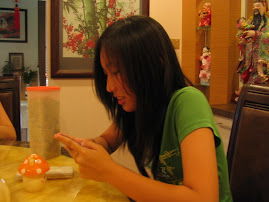
The harp is a stringed instrument which has the plane of its strings positioned perpendicular to the soundboard. All harps have a neck, resonator and strings. Some, known as frame harps, also have a forepillar; those lacking the forepillar are referred to as open harps. Depending on its size (which varies considerably), a harp may be played while held in the lap or while stood on the floor. Harp strings can be made of nylon (sometimes wound around copper), gut (more commonly used than nylon), wire, or silk. A person who plays the harp is called a harpist or a harper. Folk and Celtic musicians often use the term "harper," whereas classical/pedal musicians use "harpist."
Various types of harps are found in Africa, Europe, North, and South America, and a few parts of Asia. In antiquity harps and the closely related lyres were very prominent in nearly all musical cultures, but they lost popularity in the early 19th century with Western music composers, being thought of primarily as a woman's instrument after Marie Antoinette popularised it as an activity for women.
The aeolian harp (wind harp), the autoharp, and all forms of the lyre and Kithara are not harps because their strings are not perpendicular to the soundboard; they are part of the zither family of instruments along with the piano and harpsichord. In blues music, the Harmonica is called a "Blues harp" or "harp", but it is a free reed wind instrument, not a stringed instrument.
Use in music
The harp is used sparingly in ballad (music), and most classical music, usually for special effects such as the glissando, arpeggios, and bisbigliando. It was commonly used on American pop music hits of the 1970s[citation needed]. Italian and German opera uses harp for romantic arias and dances; an example of which is Musetta's Waltz from La bohème. French composers such as Claude Debussy and Maurice Ravel composed harp concertos and chamber music widely played today. In the 19th century, the French composer and harpist Nicolas-Charles Bochsa composed hundreds of pieces of all kinds (opera transcriptions, chamber music, concertos, operas, harp methods). Henriette Renié and Marcel Grandjany have composed many lesser-known solo pieces and chamber music. Modern composers utilize the harp frequently, but while the pedals on a concert harp allow many sorts of non-diatonic scales and strange accidentals to be played, some modern pieces call for impractical pedal manipulations.
Many passages for solo harp can be found in 19th century ballet music, which utilized the harp to a great extent in order to embellish the dancing of the ballerina. Elaborate cadenzas for harp were composed by Tchaikovsky for his ballets Swan Lake, The Nutcracker, and The Sleeping Beauty; as well as Alexander Glazunov for his score for the ballet Raymonda, which contains the variation titled Une fantaisie (a.k.a. Prélude et variations) which many modern conservatories utilize for the application and audition process.
In particular, the scores of Riccardo Drigo contained many compositions for harp which were renowned in their day (found in such works as Le Talisman and Les Millions d'Arlequin), as well as Cesare Pugni, whose ballets Éoline, ou La Dryade and Ondine, ou la Naïad included music written for harp to accompany the ballerina's numerous variations and enhance the atmosphere of the ballet's many fantastical scenes.
See the List of compositions for harp for the names of some notable pieces from the classical repertoire.
Alan Stivell is a well-known crossover and Celtic harpist. He first recorded an EP record, "Musique Gaélique," in 1959, then an LP in 1964 called "Telenn Geltiek " (available in CD). Following these, he has released 21 other albums including his harps, from 1970 until now (the last one is "Explore" - 2006- ). He recorded also some albums specially dedicated to the harp: the famous "Renaissance of the Celtic Harp" (1972), "Harpes du Nouvel Age" (1985), and "Beyond Words" (2002). He helped to promote developments in Electro-acoustic and Electric harps.
Harpists active in jazz, free improvisation, folk music, world music, and "Celtic dream" music, include:

No comments:
Post a Comment